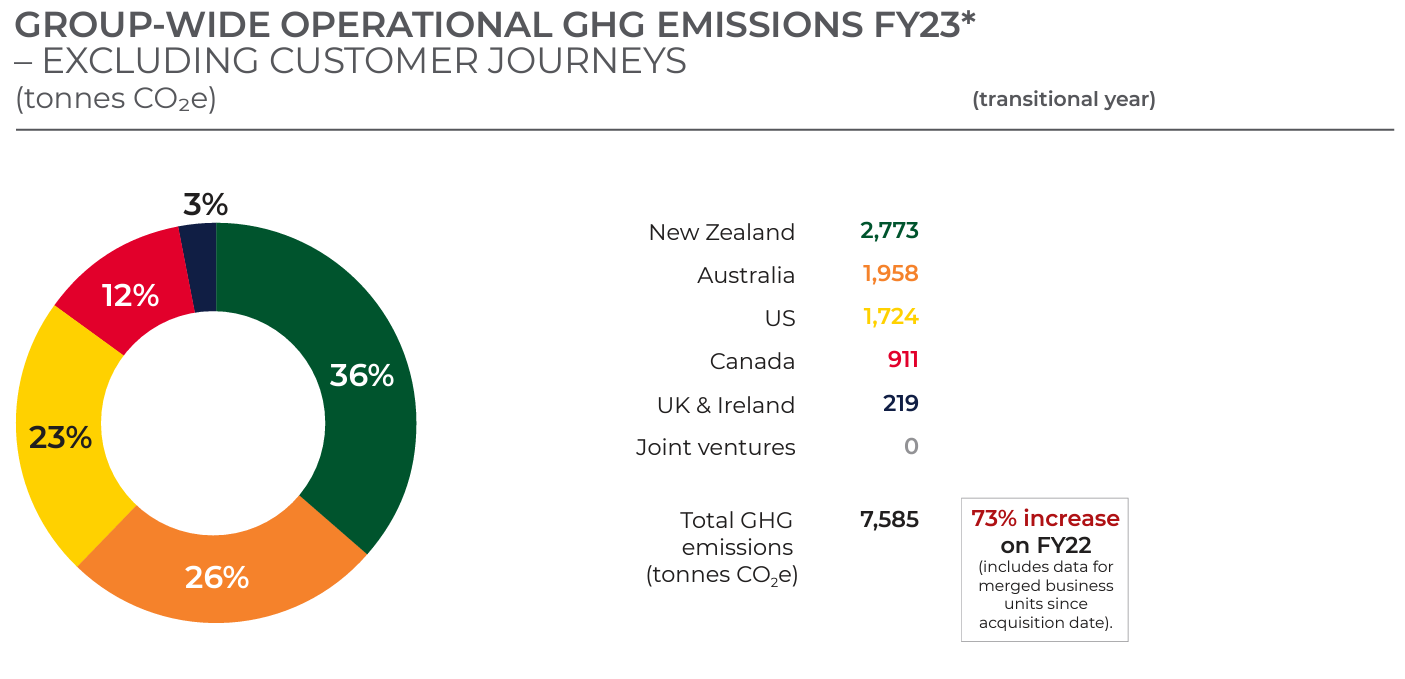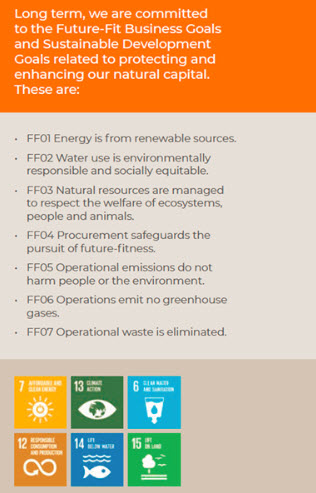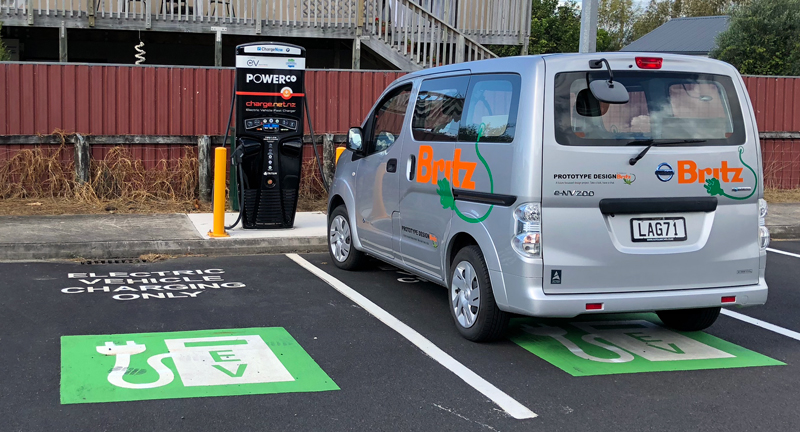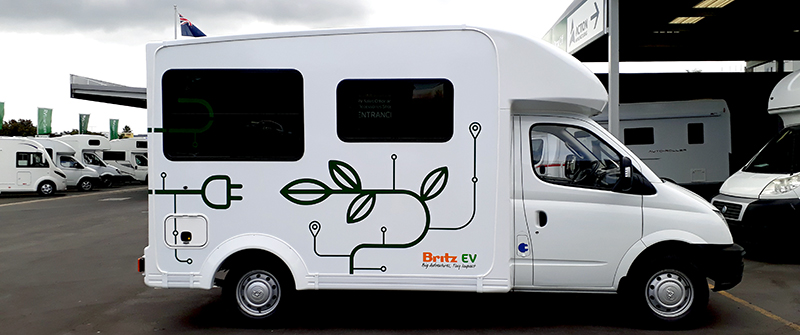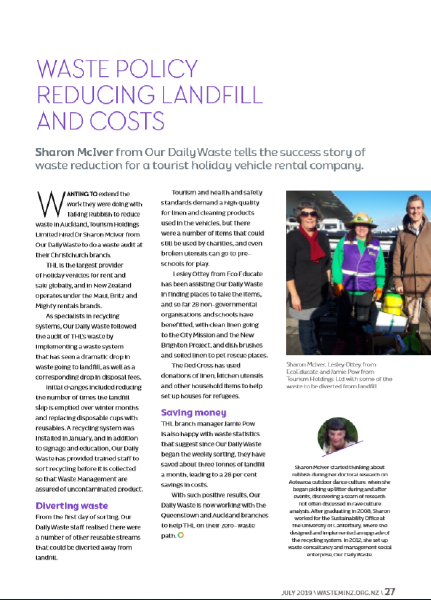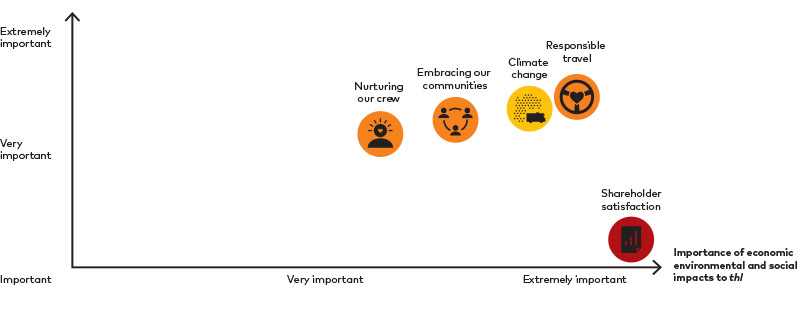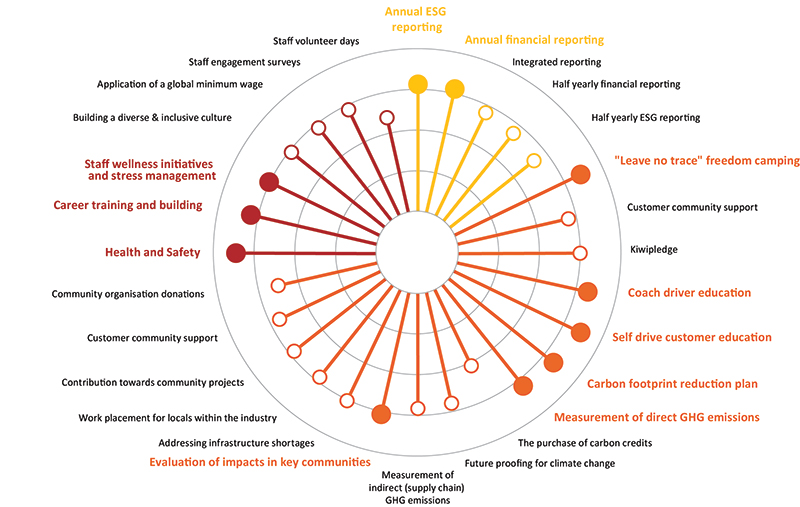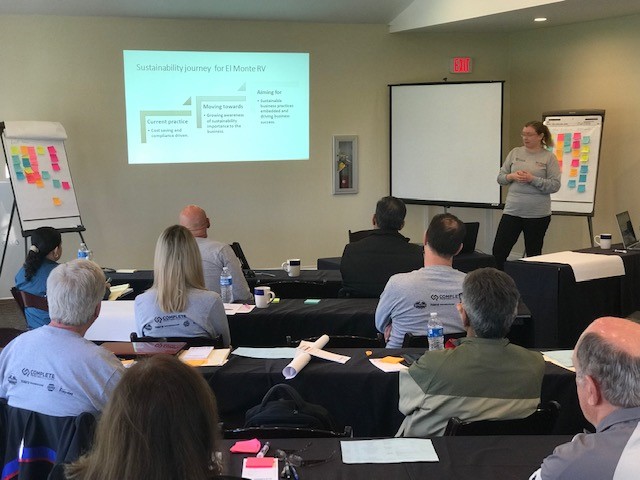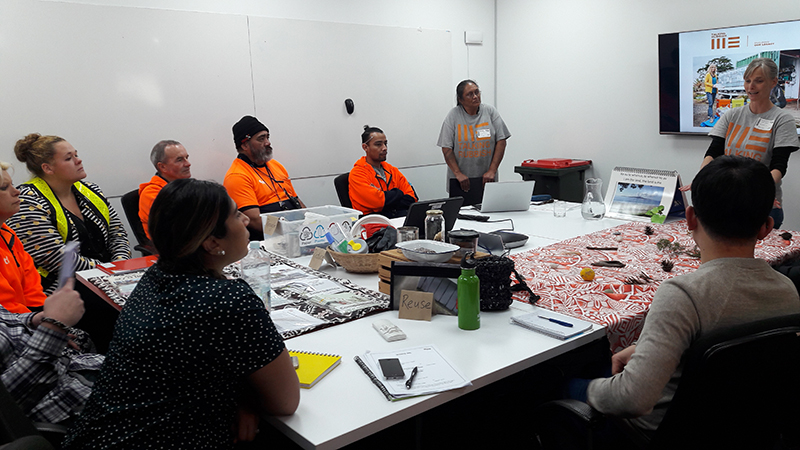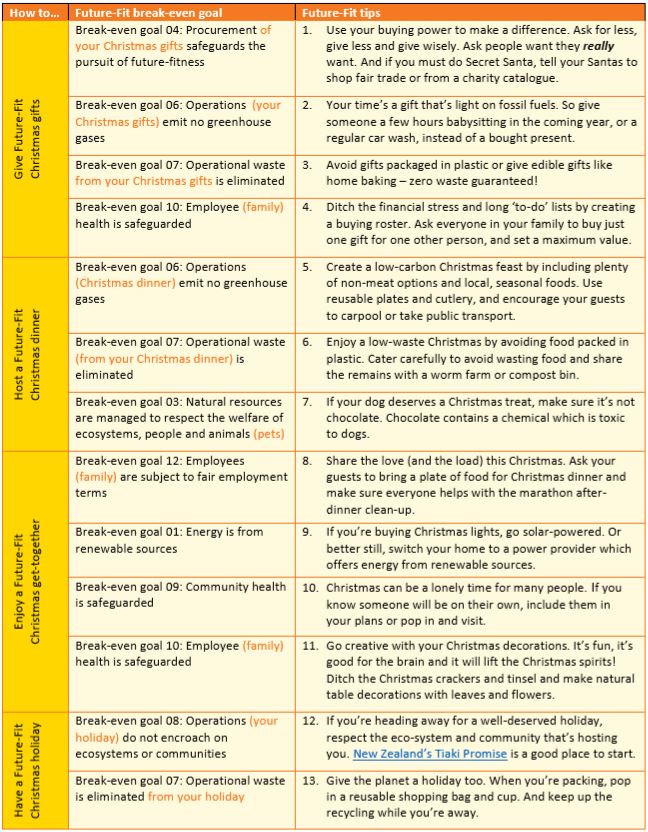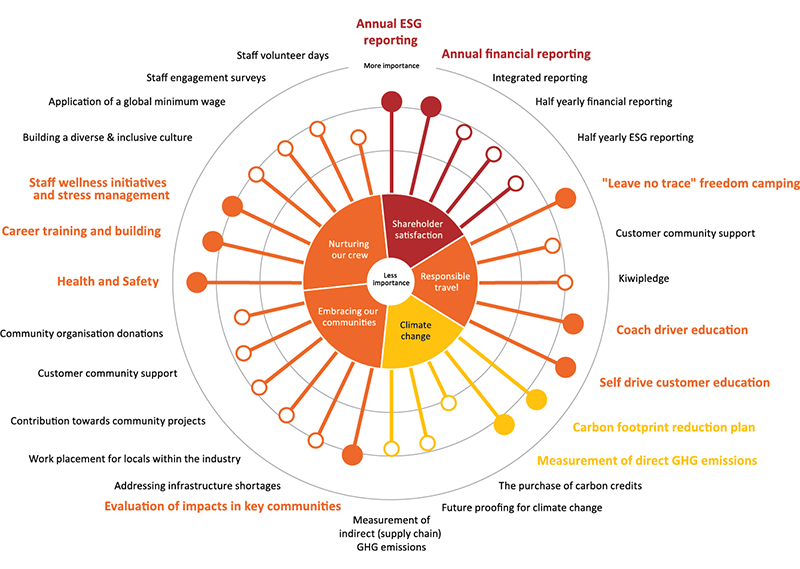Climate Disclosures: Metrics & Targets
Aotearoa New Zealand Climate Standard 1
Disclosures 21-26
Disclosure objectives: To enable users to understand how thl measures and manages its climate-related risks and opportunities. Metrics and targets also provide a basis upon which users can compare entities within a sector or industry.
| NZ CS 1 | Disclosure Requirements | Disclosure Response |
| 21(a) | the metrics that are relevant to all entities regardless of industry and business model (see paragraph 22); | thl has not explicitly disclosed industry-based metrics used to measure and manage climate-related risks and opportunities. Quantitative metrics will be developed in FY24. These will be informed by qualitative metrics that are already used within our future-fit Business Benchmark. This process will consider commonly used metrics within the tourism industry. |
| 21(b) | industry-based metrics relevant to its industry or business model used to measure and manage climate-related risks and opportunities; | |
| 21(c) | any other key performance indicators used to measure and manage climate-related risks and opportunities; and | |
| 21(d) |
the targets used to manage climate-related risks and opportunities, and performance against those targets (see paragraph 23). |
Our current target includes a 50.4% reduction in greenhouse gas emissions by 2032 from our FY20 baseline. This target was set prior to our merger with Apollo and covers scope 1, 2 and partial scope 3 GHG emissions. We plan to reinstate our baseline and update our targets to cover full scope 3 emissions in FY24. The delay is due to the need to gather a full year of post-merger data with Apollo. |
|
Metrics |
||
| 22(a) |
greenhouse gas (GHG) emissions: gross emissions in metric tonnes of carbon dioxide equivalent (CO2e) classified as (see paragraph 24): (i) scope 1 (ii) scope 2 (calculated using the location-based method); (iii) scope 3; |
To reflect our status as a merged business we are restating our existing baseline in FY24. This will reassess our Scope 1 and 2 emissions and target and include our Scope 3 emissions. |
| 22(b) |
GHG emissions intensity; |
We have not yet committed to any intensity targets. These will be developed in FY23 as part of a wider project to develop climate resilience metrics. |
| 22(c) |
transition risks: amount or percentage of assets or business activities vulnerable to transition risks; |
A high portion of our business is exposed to transition risks, in particular decarbonisation of our fleet. The percentage of our business that is vulnerable to this risk will be derived in FY24. |
| 22(d) |
physical risks: amount or percentage of assets or business activities vulnerable to physical risks; |
A low to moderate portion of our business is exposed to physical risks, including the impacts of extreme weather events. The percentage of our business that is vulnerable to this risk will be derived in FY24. |
| 22(e) |
climate-related opportunities: amount or percentage of assets, or business activities aligned with climate-related opportunities; |
The percentage of assets or business activities aligned with climate-related opportunities will be derived in FY24. |
| 22(f) |
capital deployment: amount of capital expenditure, financing, or investment deployed toward climate-related risks and opportunities; |
The thl Board has approved ongoing capital expenditure to trial EV and other low carbon vehicle technologies (see example in 8(c)). |
| 22(g) |
internal emissions price: price per metric tonne of CO2e used internally by an entity; and |
We do not currently use an internal price on carbon to inform decision-making. This will be considered as part of our review of strategic decision-making process in FY24. |
| 22(h) |
remuneration: management remuneration linked to climate-related risks and opportunities in the current period, expressed as a percentage, weighting, description or amount of overall management remuneration (see also paragraph 8(d)). |
We do not currently consider climate-related risks within management remuneration. |
|
Targets |
||
| 23(a) | the time frame over which the target applies; | Addressed in 21(d) (above). |
| 23(b) | any associated interim targets; | |
| 23(c) | the base year from which progress is measured; | |
| 23(d) | a description of performance against the targets; and | Given the merger with Apollo and the need to restate our baseline data and associated science-aligned target, we will update on our performance once the new target has been set. FY23 has been a 'transition' year, with approx. 85% of our merged sites included in our carbon footprint (noting a partial year of reporting of Apollo sites). Our total transitional footprint as a much larger merged business is 65,472 tCO2e (approx. a 60% increase on FY22). Please see our Integrated Annual Report for more information. |
| 23(e) |
for each GHG emissions target: (i) whether the target is an absolute target or intensity target; (ii) the entity’s view as to how the target contributes to limiting global warming to 1.5 degrees Celsius; (iii) the entity’s basis for the view expressed in 23(e)(ii), including any reliance on the opinion or methods provided by third parties; and the extent to which the target relies on offsets, whether the offsets are verified or certified, and if so, under which scheme or schemes. |
Once our base year is reinstated, we will update our science-based reduction targets. The updated targets will: (i) be absolute reduction targets. (ii) align with 1.5 degrees Celsius. (iii) be independently verified by the Science-Based Target Initiative. (v) not rely on offsets. |
|
GHG emissions |
||
| 24(a) | a statement describing the standard or standards that its GHG emissions have been measured in accordance with; |
thl primarily uses the ISO 14064-1:2018 standard but also aligns with language and framing from the GHG Protocol’s standards. Our full scope 3 GHG inventory in FY24 will align with the GHG Protocol Value Chain (Scope 3) Standard. |
| 24(b) | the GHG emissions consolidation approach used: equity share, financial control, or operational control; | thl follows the equity share approach. |
| 24(c) | the source of emission factors and the global warming potential (GWP) rates used or a reference to the GWP source; and |
Country-specific emission factors are used if available, including emissions factors from:
|
| 24(d) | a summary of specific exclusions of sources, including facilities, operations or assets with a justification for their exclusion. |
Exclusions from our FY23 GHG inventory include:
|
|
Assurance |
||
| 25 | Part 7A of the Financial Markets Conduct Act 2013 requires that the disclosure of an entity’s GHG emissions as required by Aotearoa New Zealand Climate Standards are the subject of an assurance engagement. This Standard requires that this assurance engagement is a limited assurance engagement at a minimum. | thl’s FY23 greenhouse gas (carbon) footprint has been independently assured by McHugh & Shaw Ltd. It is considered consistent with the mandatory requirements of ISO 14064-1:2018, with Reasonable Assurance (Scope 1/ISO Category 1 Emissions and Scope 2/ISO Category 2 Emissions) and Limited Assurance (Scope 3/ISO Category 3-6 Emissions). |
| 26(a) |
GHG emissions: gross emissions in metric tonnes of CO2e classified as (see paragraph 22(a)): (i) scope 1; (ii) scope 2 (calculated using the location-based method); (iii) scope 3; |
|
| 26(b) | additional requirements for the disclosure of GHG emissions (see paragraph 24); | |
| 26(c) | GHG emissions methods, assumptions and estimation uncertainty (see NZ CS 3 General Requirements for Climate-related Disclosures paragraphs 52 to 54). | |
